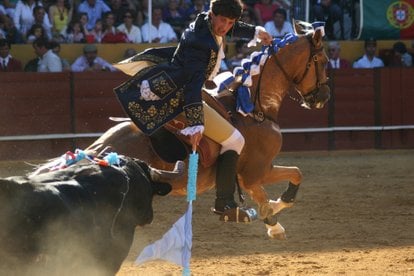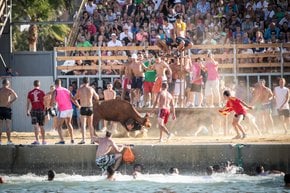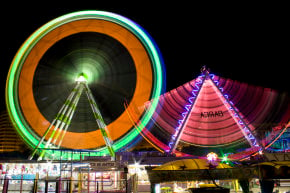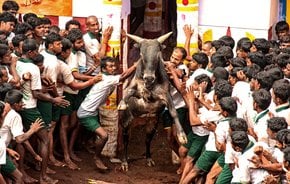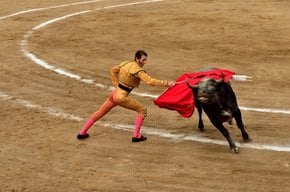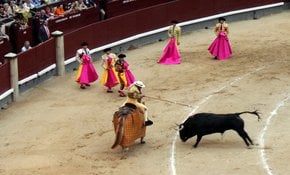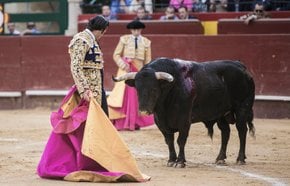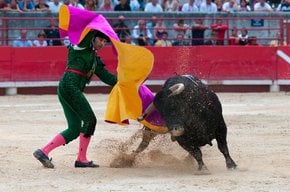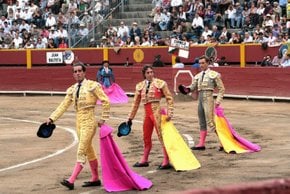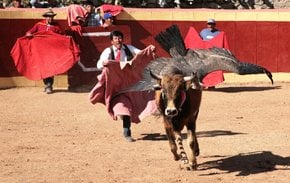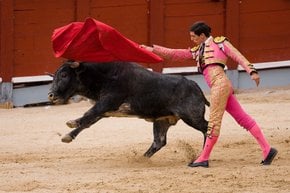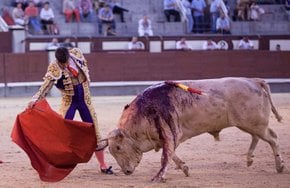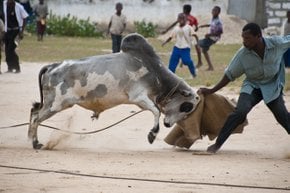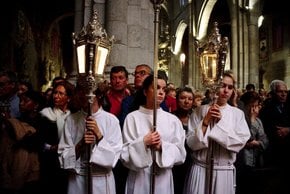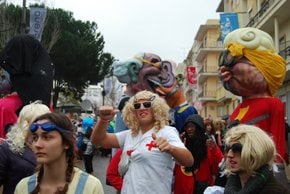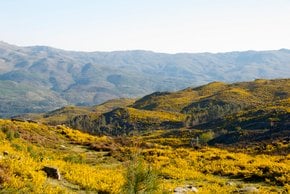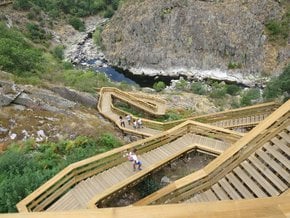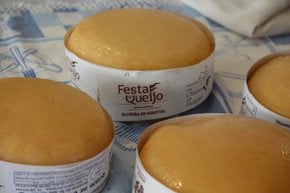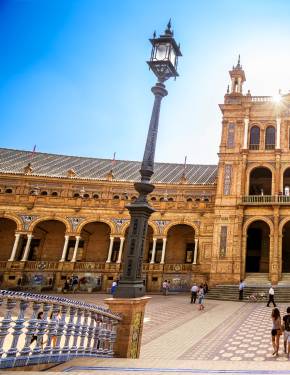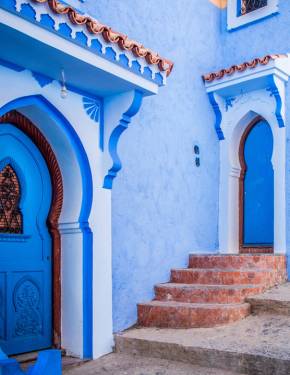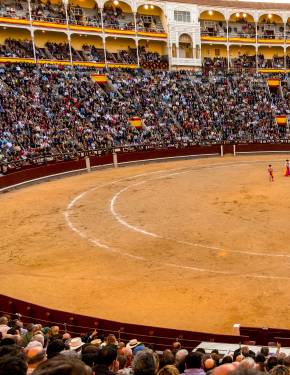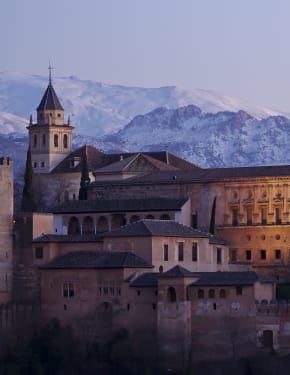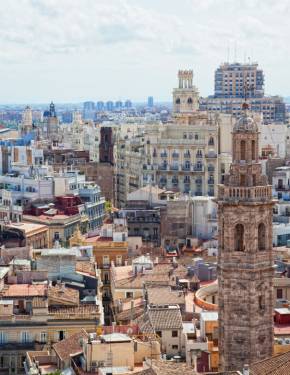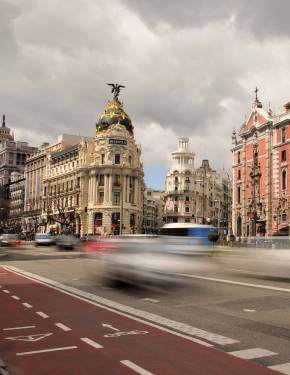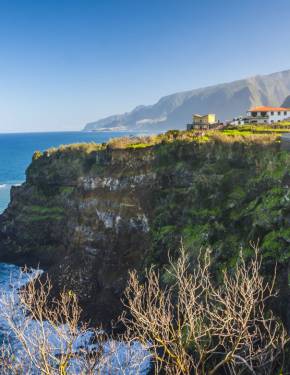Lisbon Bullfighting 2026 in Portugal
Tauromaquia in Portugal is no less colorful than Spanish corrida
Dates: Easter Sunday–early fall (on selected Thursdays)
Bullfighting in Portugal is a 300-year tradition. Its rules are slightly different from Spanish corrida. The bull is not killed during the performance. It's being attacked by cavaliers—a horseman or horsewoman dressed in the 18th-century costume. The bull is also challenged by the groups of forcados, who are usually unarmed. Campo Pequeno stadium in Lisbon is the official home to Portuguese bullfighting.
Rules of Portuguese-Style Bullfighting
Contrary to Spanish bullfighting, which evolved into matadors having a stand-off with the bull on foot, the Portuguese continue with their traditional equestrian bullfighting, which involves a group of performers: rejoneadores and forcados. Riding their horses, rejoneadores attempt to spear the animal, while the main job of forcados is to provoke it and stop it from charging ahead. The impressive agility of horses, as they skillfully avoid the bull's attacks, can't go unnoticed.
Bullfight Dates & Schedule
The bullfighting season generally begins during Spring, on Easter Sunday, and lasts until late summer or early fall. The fights are also traditionally scheduled on Thursdays at around 10 pm. This year, the inaugural fight of the season is set to take place on July 4th at 9:45 pm. The match is a tribute to Nuno Megre, a renowned forcado in the tauromaquia scene. In August, Campo Pequeno hosts two fights on August 8th and August 22nd, both set to begin at 9:45 pm.
The culmination of the season unfolds on September 6th at 9:45 pm with the special performance, which bids farewell to Pablo Hermoso, a world-famous newly retired bullfighter with a two-decade experience. The event also doubles as a celebration of the 80th anniversary of Grupo de Forcados Amadores de Lisboa.
Tickets
Because of its traditional stadium setup, Campo Pequeno offers several seating options for its visitors, such as seats in bancada, camarotes, and galerias. Tickets for seats in bancada, the seating area in the lower part of the venue, range from €108 to €288. Seats in galerias, the balconies of the bullring, offer a higher vantage point and cost €54-€90. There are also seats in camarotes, exclusive VIP areas, which provide some of the best views of the bullfighting. The cost for those seats ranges from €360 to €1,296.
History of Campo Pequeno Bullring
Campo Pequeno stadium is a very atmospheric place constructed in traditional North African design. The large orange brick structure with imposing octagonal towers topped by domes is one of Lisbon's main landmarks. The Campo Pequeno bullring originates from 1890 and was meant to replace the old stadium of Campo de Santana.
The architect, Antonio José Dias da Silva, was influenced by Moorish North African design. The stadium was completed in 2 years. The Bullring underwent reconstruction and re-opened in 2006, providing space for 10,000 people.
Origins of Portuguese Bullfighting
Portuguese corridas de touros are definitely less cruel than in some other parts of the world. The historic differences in Spanish and Portuguese bullfighting date to the times of King Joseph I of Portugal.


